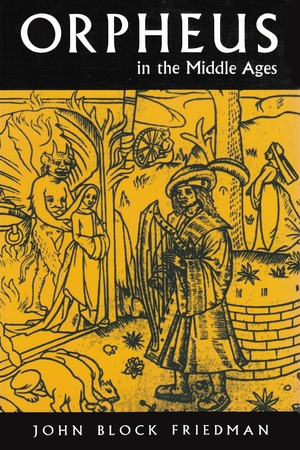"Erudite, perceptive, and witty, as always, John Friedman shows the social implications and symbolism of medieval clothing."—Paul Freedman, Yale University
"With a sharp eye for fashion and an astute analysis of cultural indicators permeating this body of literature, Friedman uncovers commonalities and contrasts, underscoring ways in which social status, and even fear in the face of change, were concerns that extended beyond national boundaries in medieval Europe.”"—Geri L. Smith, author of The Medieval French Pastourelle Tradition
Description
What do Brueghel’s mid-sixteenth-century portrayals of “heavy” wedding dancers and feasters have in common with many late medieval poems and manuscript illustrations? Certain of his paintings, with their obsessive social detail, have often been treated as if they heralded a set of cultural attitudes peculiar to the Early Modern period. Yet the way that the painter combines, in a single scene, scurrilous behavior with dress not only unsuited to the rustic status of the wearers but often sexually revealing, reflects attitudes toward clothing, class, and culture that are deeply medieval. In this expansive and highly original book, Friedman reveals how portrayals of peasants from the literature of the Golden Age of Virgilian Pastoral, who behave according to their social station, were increasingly replaced in the Middle Ages by portrayals that present the realistic peasant, whose outrageous behavior betrays his or her class while it threatens those who stand “above.”
Capacious in scope, the book covers poems from England, France, Germany, Italy, and Spain from the twelfth through the sixteenth centuries. In addition, Friedman draws on texts from various genres, particularly the Pastourelle, giving readers the first panoramic approach to late medieval views of peasant clothing and certain related social behaviors such as eating, publicly excreting, brawling, and “mooning.” The book examines elite anxiety over the socially striving lower classes during a period in which social identity was fluid and hierarchies were increasingly challenged by pressure from below. Illustrated with over twenty black and white images and offering detailed analyses of poems, plays, and stories, Brueghel’s Heavy Dancers offers a fresh and illuminating contribution to the field of medieval studies.
About the Author
John Block Friedman is emeritus professor of English at the University of Illinois at Urbana-Champaign. He is the author of The Monstrous Races in Medieval Art and Thought, Orpheus in the Middle Ages, and Northern English Books, Owners, and Makers in the Late Middle Ages, all published by Syracuse University Press. He is currently working on an edition and translation of Secrets de l’Histoire Naturelle, a fifteenth-century French collection of geographical wonders.
May 2010



